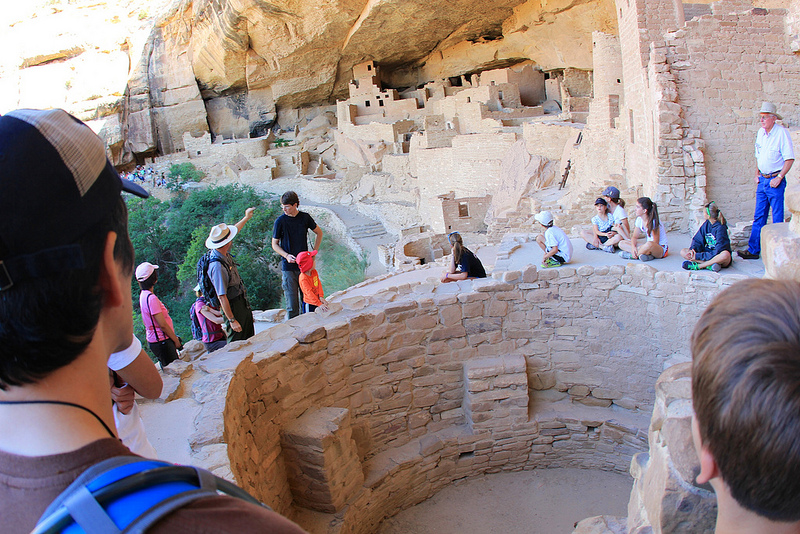- You are here:
- Home »
- Uncategorized »
- How to Write A Tour Itinerary That Entices & Excites

A compelling tour itinerary helps travelers imagine the experience.
Photo: Daveynin_CC
How To Write A Tour Itinerary
That Entices & Excites
Tour itineraries help seal the deal. If written well, they provide travelers with one more morsel of information they need to book a tour.
So engage their imagination with a compelling itinerary that’s descriptive, informative and enticing.
As with any piece of copy, you first need to understand your target audience. What type of experiences do they value the most? Do they crave thrills? Luxury? Happy Hour? Once you’ve figured that out, tour itineraries are much easier to pen.
Here are 5 tips to help you write a travel itinerary that’s both informative and persuasive.
Break out the highlights first
Remember that most people scan websites rather than read them — not everyone wants to consume a lot of text. So make it as simple as possible for scanners to gobble up all the info they need with bullet points.
First, give them a list of tour highlights. Start each line with a strong verb and a short descriptive sentence. For example:
• Soar above the mysterious Nazca Lines
• Explore the crumbling ruins of Choquequirao
• Wander through Plaza de Armas in Cuzco
You’ll also need to make it absolutely clear what your tour includes. Summarize the accommodations, transportation services, meals and everything else that comes with the trip. How much space you devote to this really depends on the size of the journey and how much information you feel travelers will need.
Keep it descriptively simple
No matter what, you have to keep your copy simple and clear. If your readers don’t understand what you’re saying, or the copy is tough to read, you’ll lose them after Day 1 of the itinerary.

Use sensory-focused description to help people imagine what it’s like to be on your tour.
Photo: Kristina_CC
But at the same time, you don’t want to bore them with a list of facts. Travel marketing is about sparking their imagination, after all. So you need to balance brevity with vivid, sensory-focused copywriting.
Try focusing on one or two descriptive elements from the tour. What sensory details stand out the most? Think beyond the visual: scents, sounds and even tastes. Here’s an example from an Abercrombie & Kent itinerary for a tour of Egypt:
Walk from Bab el-Fotouh to Khan el-Khalili Bazaar, one of the city’s major souks (open-air marketplace), where tightly packed stalls display everything from spices and leather goods to jewelry and birds, and all on a street that has hardly changed for centuries. Bargaining is expected, so prepare to negotiate.
Just a little descriptive copy makes this itinerary pop: tightly packed stalls display everything from spices and leather goods to jewelry and birds. Just be sure to keep your descriptive copy tight and specific.
Don’t feel as if you have to squeeze in details of everything your customer will be experiencing on every day of the tour. Focus on the main attractions and just briefly mention the little stuff.
Strong verbs sell tours
Engaging and original verbs drive the action and help travelers picture themselves on the tour. So try to use strong and ultra-specific words that demand attention.
After all, no one goes on a tour to sit still. They want action. Adventure. And you can convey that type of experience with the right words.
For example, instead of saying ‘visit the ruins of an ancient temple’ try something like ‘press through the narrow corridors of an ancient temple.’ That line is much more likely to get travelers daydreaming about the trip.
Tell them where they’ll sleep
This one’s simple yet important: make sure it’s absolutely clear where travelers will be resting their heads at night. Some tour companies leave this vital detail out.
I’m sure you already know that travelers crave comfort. In fact, tapping into people’s need for physical comfort can be very persuasive. By not mentioning where your customers will be sleeping at the end of each day, your tour itinerary leaves unanswered questions in the mind of your prospects. And that could make them uneasy about the entire tour.
Plus, the fix is pretty simple. Just slip in a quick line that says ‘spend the night at a five-star seaside resort’ or ‘sleep in a full-service, safari-style tent.’
Or you could spend a little more ink detailing the accommodations on the trip. Like I said, comfort sells.
If you use symbols, make their meaning clear
Some tour operators like to use symbols to illustrate certain things that are included for each day of the tour. A little bus icon might indicate transportation, for example. And that’s fine, but just be 100% certain that travelers won’t need a decoder ring to figure out what you’re trying to say.
Not sure if your symbols are clear? Get a few people who are not familiar with your business to take a look at the itinerary and ask them if anything is confusing. The feedback might help you craft a more enticing tour description.
Does my enthusiasm show?
To write a compelling tour itinerary, you have to be both a travel writer (entertainment) and a tourism copywriter (marketing). It’s one of those rare times when these two professions overlap. Maybe that’s why I love writing itineraries so much.
And while these pieces of copy may not be as vital as your homepage headline or the call to action on your landing page, spending a little extra effort on making them shine will pay off. Give it a try and let me know how it goes.
–Dustin Walker
Fire Up Your Marketing Content
Get blog articles on how to create compelling travel content that’ll boost your traffic, leads and bookings. Just enter your best e-mail address in the box below…
